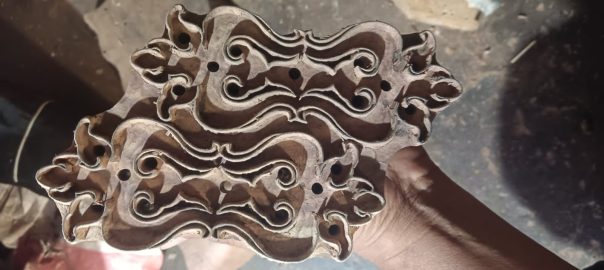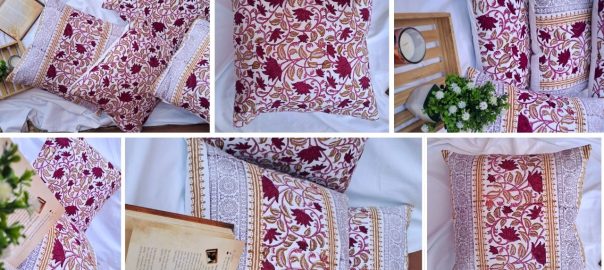The saree, an epitome of grace and elegance, holds a cherished place in the hearts of Indian women and has been a symbol of Indian heritage and culture for centuries. These six to nine yards of fabric is not just a piece of clothing but an expression of tradition, diversity, and femininity. Let’s explore why sarees remain the most popular Indian dress and how they continue to evolve with time. In this Blog we will also learn about Hand Block Print saree in Bhopal.
A Rich Tapestry of History
The saree’s history dates to the Indus Valley Civilization (2800-1800 BC), making it one of the oldest forms of clothing still in existence. Ancient sculptures, paintings, and texts reference sarees, showing their timeless appeal. Over millennia, sarees have evolved, influenced by various dynasties, regions, and cultures across the Indian subcontinent.
Diverse Styles and Regional Varieties
India’s rich cultural diversity is vividly reflected in the myriad styles and types of sarees, each with its unique weaving techniques, patterns, and stories.
Some of the most iconic regional varieties include:
1. Banarasi Sarees: Originating from Varanasi, these sarees are renowned for their opulent silk fabric and intricate gold and silver brocade work.
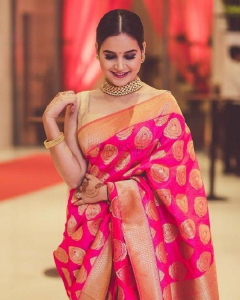
2. Kanjeevaram Sarees: Hailing from Tamil Nadu, Kanjeevaram sarees are famous for their rich silk material and vibrant colors, often adorned with traditional temple patterns and motifs.
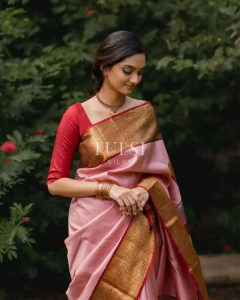
3. Bandhani Sarees: From Gujarat and Rajasthan, Bandhani sarees are characterized by their tie-dye technique, resulting in beautiful patterns of dots, stripes, and waves.

4. Chanderi Sarees: These sarees from Madhya Pradesh are known for their lightweight texture and luxurious feel, often featuring delicate floral and geometric patterns.
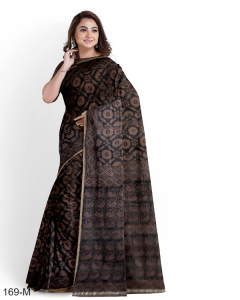
5. Maheshwari Saree: These sarees are also from Madhya Pradesh. The fabric is cotton silk blend and borders of about 1.5 to 2 inches are woven with Zari. The designs are usually small bootis.
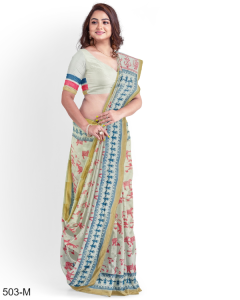
6. Patola Sarees: Another gem from Gujarat, Patola sarees are handwoven and double-ikat, making them a treasured heirloom passed down through generations.
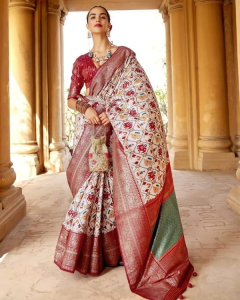
Symbol of Femininity and Elegance
A saree is more than just attire; it embodies the essence of Indian womanhood. The way a saree drapes around the body accentuates the wearer’s grace, exuding an aura of sophistication and poise. It is versatile enough to be worn for various occasions, from everyday wear to weddings, festivals, and official events.
Modern Adaptations and Innovations
While sarees remain deeply rooted in tradition, they have also adapted to contemporary fashion sensibilities. Modern designers experiment with fabrics, colors, and draping styles, creating fusion sarees that appeal to the younger generation. These innovations ensure that sarees remain relevant and fashionable in today’s fast-paced world.
1. Pre-stitched Sarees: For those who find draping a saree challenging, pre-stitched sarees offer a convenient alternative. They combine the elegance of a saree with the ease of wearing a skirt.
2. Contemporary Blouses: Modern blouses come in various styles, including off-shoulder, halter neck, and crop tops, adding a chic twist to the traditional saree.
3. Experimental Fabrics: Designers are incorporating unconventional fabrics like denim, chiffon, and georgette, creating sarees that cater to different tastes and preferences.
4. Unique prints: Sarees with modern designs printed with vibrant colours or traditional but unique designs with story about heritage are the new trend in Sarees.
Cultural Significance and Revival
Sarees are an integral part of Indian rituals and ceremonies. From weddings and festivals to religious functions, sarees hold immense cultural and emotional value. Recently, there has been a resurgence of interest in handloom and artisanal sarees, with many women opting for these exquisite pieces like hand block print sarees in Bhopal, over mass-produced variants. This revival supports local weavers and artisans, preserving the rich textile heritage of India, particularly the art of hand block printing sarees.
Bhopal is experiencing a rise in demand for hand block printed sarees, with varieties like hand block printed linen sarees in Bhopal, hand block printed Chanderi sarees, and hand block printed Maheshwari sarees gaining immense popularity.
Conclusion
The saree stands as a testament to India’s cultural richness and diversity. Its enduring charm lies in its ability to evolve while retaining its traditional essence. As we celebrate the timeless elegance of sarees, we also recognize their role in uniting generations and communities through a shared heritage.
In a world of fleeting fashion trends, the saree remains a beloved and iconic piece of clothing that continues to inspire awe and admiration. Whether draped in a traditional style or given a modern twist, the saree is and will always be the most popular Indian dress, embodying the spirit and grace of Indian women.






